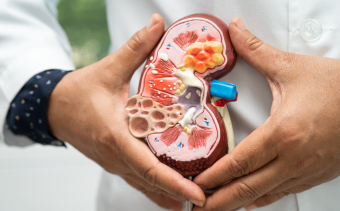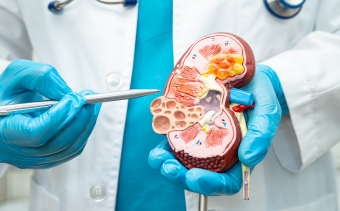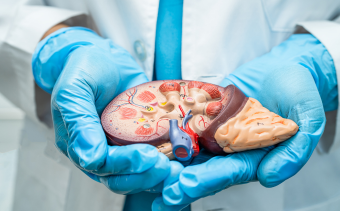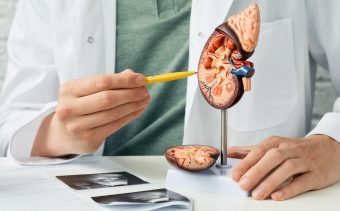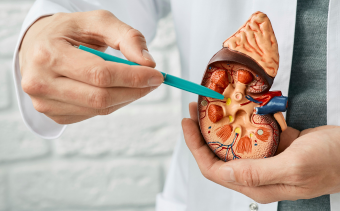Congenital Nephrotic Syndrome (CNS)
is a rare kidney disorder that begins at birth or within the first 3 months of life.
Infantile Nephrotic Syndrome (INS)
is also a rare kidney disorder that occurs between 3 months and 1 year of life.
Overview and Symptoms:
Focal Segmental Glomerulosclerosis (FSGS) is a rare kidney disease characterized by dysfunction in the part of the kidney that filters blood (glomeruli). Only some glomeruli are affected, but continued damage can lead to kidney failure.
Protein in the urine, which can be foamy (proteinuria)
Low levels of protein in the blood (hypoalbuminemia)
Swelling in parts of the body, most noticeable around the eyes, hands, feet, and abdomen (edema)
High Triglyceride levels
Can cause high blood pressure (hypertension) and high fat levels in the blood (high cholesterol)
Fast Facts
The majority of CNS and INS cases are caused by genetic changes that cause defects in the filtering units of the kidneys.
80% of CNS cases are caused by four different gene mutations: NPHS1 and NPHS2 (the most common types), PLCE1, WT1, LAMB2
2/3 of INS cases are explained by four gene mutations: NPHS1, NPHS2, LAMB2, or WT1.
The majority of CNS mutations (NPHS1 or NPHS2) are autosomal recessive diseases, meaning both parents are carriers of CNS and the possibility of having an affected child is 25% (or 1 in 4 children will have the disease).
NPHS1 is also known as the Finnish-type of CNS, and is most commonly found in people with Finnish ancestry. Non-Finnish individuals often have NPHS2 mutations.
Children with NPHS1 mutations are often born prematurely with low birth weight.
Infants with CNS may have failure to thrive, have frequent life-threatening infections, and be at risk for abnormal blood clotting.
Many CNS patients develop end-stage kidney disease develop end-stage kidney disease between ages 2 and 8, and require dialysis and transplant.
Biopsy findings usually indicate FSGS.
Some causes of CNS/INS are not genetic. Other non-genetic causes include infections such as cytomegalovirus, congenital syphilis, and congenital toxoplasmosis.
Treating Your Disease
Short-Term Goals
Supplement the protein spillage through albumin infusions, provide a high-calorie diet due to the risk for poor growth, and monitor for the development of anemia and hypothyroidism. Immunoglobulin replacement may also be needed if infections are frequent or severe. Often medications such as ACE inhibitors and nonsteroidal anti-inflammatory drugs may be used to slow the spillage of protein in the urine.
Long-Term Goals
Removal of the kidneys may be necessary with a need for dialysis until kidney transplantation can occur.
There are no FDA-approved treatment options for Congenital and Infantile Nephrotic Syndrome. Often, genetic forms of Congenital and Infantile Nephrotic Syndrome patients do not respond to steroids and most do not respond to immunosuppressant medications. Treatments are aimed at controlling the symptoms, such as swelling, high blood pressure, and high cholesterol, and reducing the risks of blood clots and infections. Many patients require a bilateral nephrectomy (removal of kidneys), need dialysis, and are referred for a transplant.
Recommended Management:
- Genetic testing is a priority, after infectious screening is negative
- Optimize nutritional intake with high-calorie and high-protein diet
- Albumin infusions are often needed to manage swelling
- Closely monitor intake and output
The Following Measures May Be Needed to Improve Health Outcomes:
- Prevent infections and may need immunoglobulin replacement
- Prevent high blood pressure
- Prevent blood clots or thrombosis Prevent anemia
- Prevent severe edema
- Prevent dehydration
- Prevent malnutrition
- Thyroxine therapy for hypothyroidism

